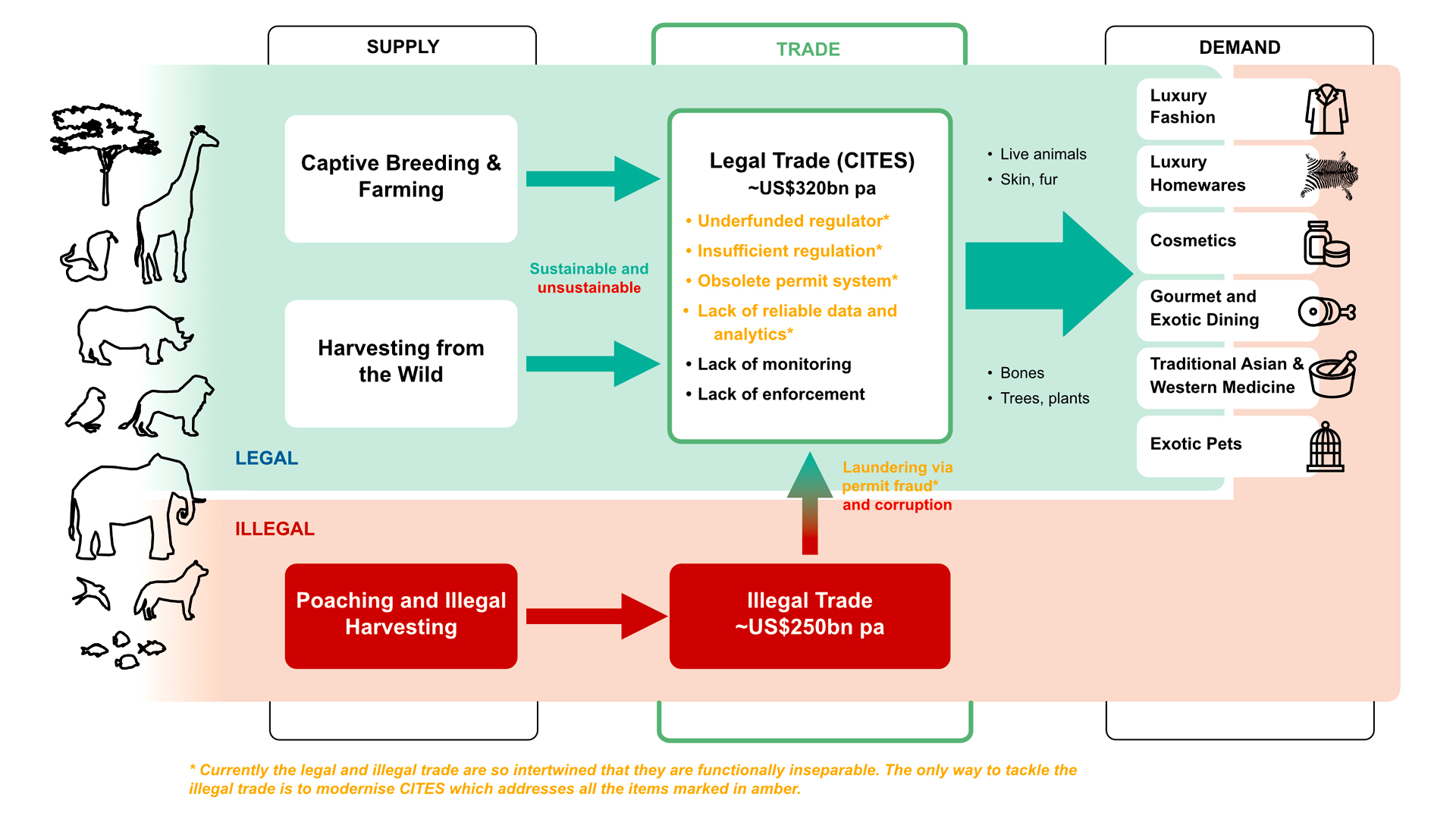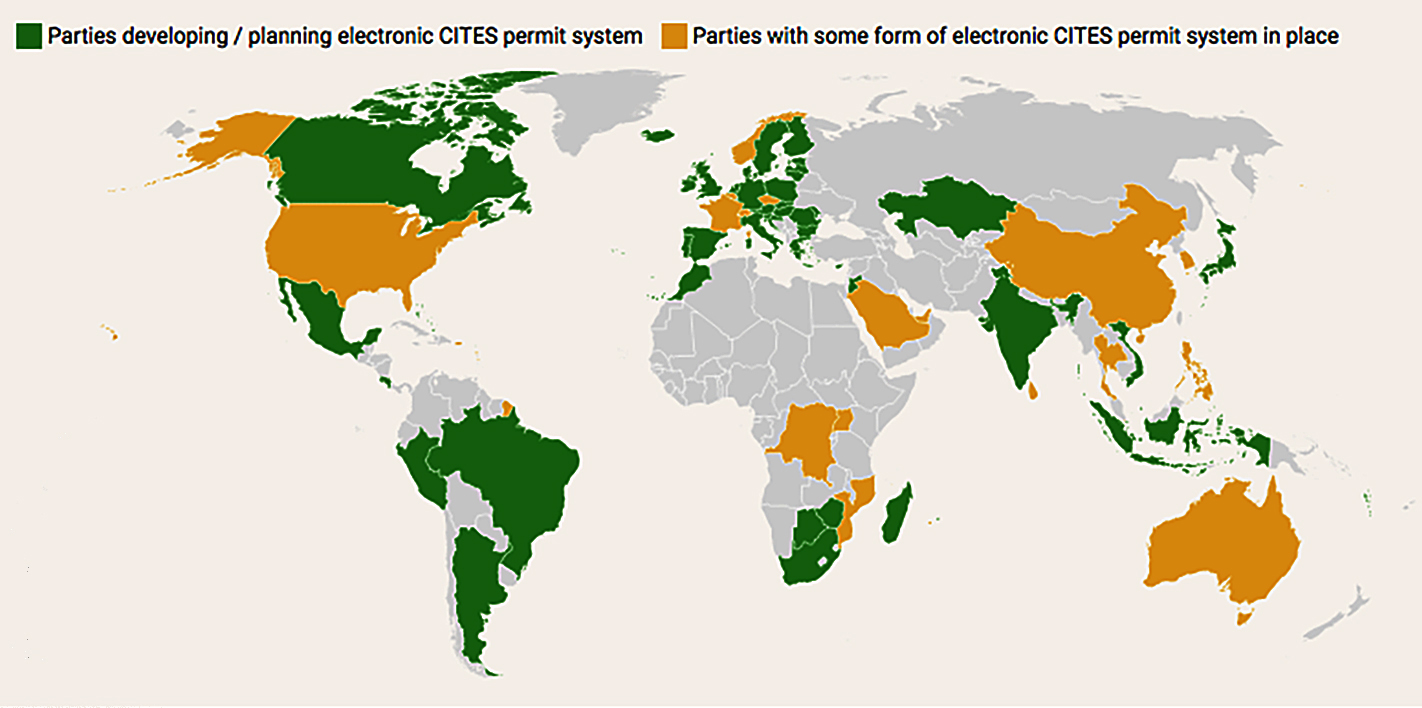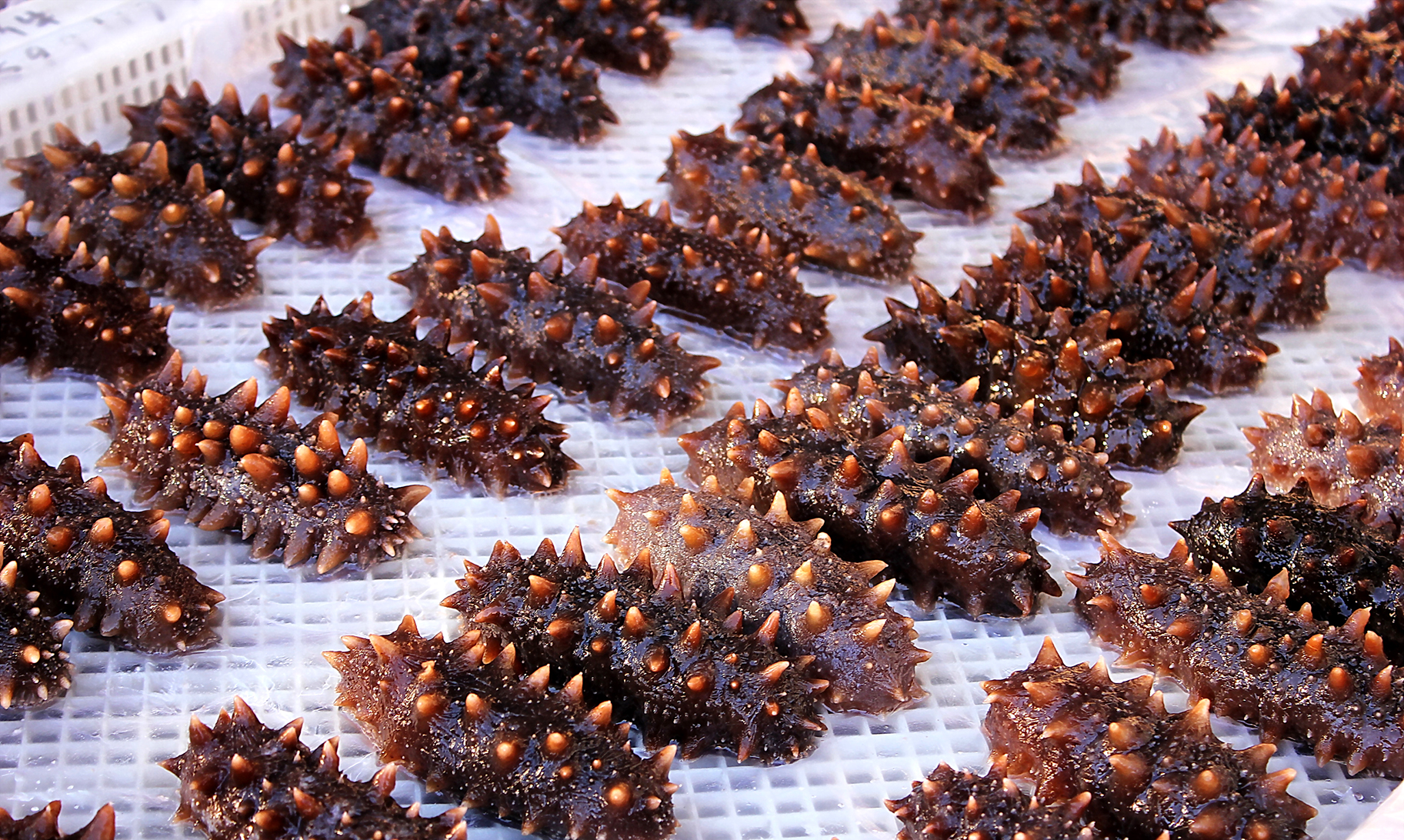CITES RETHINK ANALYSIS
Trading in wild things: Major rethink required, for biodiversity’s sake

Every year, millions of creatures and plants are traded for food, pets, fashion, curios and traditional medicines. Some end up as hunting trophies. There’s a mechanism to regulate this, but it isn’t working. The problem has a fix, but it will take audacity.
Peering through rimless glasses and flipping pages, gold cufflinks flashing, Judge Alfred Cockrell is going through documents in forensic detail as befits his role.
He has a gentle, almost fatherly smile as he demands precision from a bench of black-clad advocates in the Cape Town High Court seeking to contest hunting quotas for lions, rhinos, elephants and leopards.
The case before him is about the procedures around trophy hunting permits granted or not granted by Barbara Creecy, Minister of Forestry, Fisheries and the Environment.
The legal contest, brought by the Humane Society International/Africa, is ultimately dismissed, though certain costs of the no doubt considerably expensive case must, rules the judge, be shared.
Within a day of intense argument, however, there is a sub-theme on which, unfortunately, the judge feels he cannot comment as it would be overreach in terms of the case: how to evaluate the threat to a species by human action; a so-called non-detriment finding (NDF). How can that be assessed, who requires it and is it even possible?
Before we take a step in that direction, let’s do a bit of acronym bush clearing, because the names of the organisations coming up are a mouthful. There’s CITES (Convention on International Trade in Endangered Species of Wild Fauna and Flora), Nemba (the National Environmental Management: Biodiversity Act, 2004) and the Scientific Authority of South Africa.
While we’re at it, keep in mind another bit of shorthand: Appendix 1, 2 and 3 are categories CITES uses to afford different levels of protection to wild species – 1 being the highest, where species are threatened with extinction and need the most protection. Then there’s reverse listing, but we’ll come to that later.
To export for trade a species listed under Appendix 1 or 2, CITES requires the Scientific Authority to provide an NDF in terms of Nemba requirements. Thank heavens for acronyms, or that would’ve been a very long sentence.

Trade in wildlife. (Graphic: Nature Needs More)
It seems reasonable: before issuing an export permit, the scientific authority of a country has to ensure the trade doesn’t endanger the species’ population or disrupt its role in the ecosystem. It’s what scientists are for, right? But before we move on, let’s unpack what that requirement entails.
To ensure no harm will be done to a species, you need to know (take a deep breath) its biology and life-history characteristics; its range (historical and current); population structure, status and trends (in the harvested area, nationally and internationally); threats; historical and current species-specific levels and patterns of harvest and mortality (like age and sex); management measures currently in place and proposed, including adaptive management strategies and consideration of levels of compliance; population monitoring and conservation status. (Check out these requirements.)
How do we know what is detrimental?
All 184 CITES members are required to do an NDF on exports, but undertaking all that is, as you can imagine, time-consuming and expensive, and requires people who know how to do it.
This doesn’t mean it can’t be done, just that confidence in exporting countries – mainly in the Global South – actually doing it before issuing an export permit is not high. Without it, or it not having been done properly, an entire species can be placed at risk.

Countries with and without electronic listing of export permits. (Map: Nature Needs More)
Indeed, there are holes all over the place, according to a report by Nature Needs More, entitled “You can’t make a silk purse out of a sow’s ear”.
For a start, most traded species are simply not listed by CITES and are being traded without regulation.
Then, for Appendix 2 species (being the majority of all CITES-listed species), while exporting them requires an NDF, it is essentially “non-binding” in that there’s no penalty for ignoring it.
CITES is aware that NDFs are not doing a decent job.
A 2020 Secretariat report on NDFs was a damning indictment of the lack of quality in NDFs, finding that 64% of those surveyed inadequately considered the precautionary principle and 83% did not fully consider patterns of harvest and mortality.
It gets worse.
A peer-reviewed study published in the Journal of Environmental Management, entitled “Determining the sustainability of legal wildlife management”, found that, for most species, there was no accurate data to estimate wild population sizes, population abundance or volumes collected or traded.
So how do you answer the most basic question on which to base an NDF: what is a sustainable offtake? You can’t.
“When combined with a lack of political will,” the study notes, “this often results in scientific and economic uncertainties being propagated through most national to international trade.”
It found that in many developing countries, there was a great tendency to miscalculate what is sustainable.

The international commercial trade in at least 267 amphibian species is not regulated by CITES even though some of these species are considered threatened. (Photo: Nature Needs More)
In the wildlife field, “sustainable” has become an irritating buzzword. What it should mean is that use for human needs should not lead to a decline in biodiversity. But it’s a term as misused as “free-range” eggs. It’s a feel-good tag to make a product or action smell green and leafy.
True sustainability is damnably hard to measure but is critical to an NDF finding.
And can you calculate unintended consequences? In the 1970s/80s, for example, the trade in frogs’ legs from India and Bangladesh saw a boom in the agricultural pests they ate and an upsurge in the use of pesticides. How wide are the boundaries of your assessment? It matters.
Trade and more trade
The disturbing truth is that not only are we unaware of what’s being poached and trafficked, we don’t even know the volumes of legal trade and whether it’s sustainable.
That’s because most trade in wild species occurs outside the CITES system. To be “inside”, it has to be listed as one of the 40,900 among the earth’s estimated 8,7 million species.
Take songbirds, much desired for their sweet singing in lonely cages by people unaware of the cruelty being perpetrated. Of the estimated 6,659 traded species, none is listed in the CITES database.
Of the 36% of reptiles traded, only 9% are listed there.
Of the 17% of amphibians traded, only 2.4% are listed.

Sea cucumbers are essential for the healthy functioning of marine ecosystems, but population reductions have a knock-on effect on food webs. (Photo: Nature Needs More)
The rarer they are, the harder they get hammered. It doesn’t mean all these species are under threat, it’s that we just don’t know. It is largely a free-for-all.
The truth is that a CITES listing does not necessarily stop or even detect unsustainable trade.
While quotas and export permits may claim to be legal and transparent in claiming a sustainable trade, in the absence of solid NDFs they may be as sustainable as draining a pond to save the fish.
To be listed for trade, a country has to formally request its inclusion. Why would it do that? Largely because the species is considered potentially at risk, which is why it ended up with an Appendix listing in the first place, meaning it’s potentially in trouble.
But waiting for species to become vulnerable to extinction before providing safeguards is too high a risk.
Okay, where are we?
Apart from non-listing, let’s tick off NDF problems.
They’re complicated, potentially expensive and liable to be badly done (between 2003 and 2012, CITES exports from Africa had documentation discrepancies in 92% of records).
There’s no mechanism to control their quality and they may take so long that a species could be almost beyond saving before they’re implemented.
Worst of all, they might simply not be undertaken, which means they’re not done for the majority of species exported.
The truth is that the entire CITES export mechanism, which was designed in the 1960s, is no longer fit for purpose.
How do we fix it?
The solution is a no-brainer. No wild species, listed or not, should be traded unless permitted by an NDF. It’s called reverse listing.
The details of this have been finely worked out by trade specialist Dr Lynn Johnson of Nature Needs More.
The problem, says Johnson, is that when a risk is perceived, it’s up to the exporting country to make the call by way of an NDF. By reverse listing, it would be up to importing countries or companies to ensure – and pay the exporting country for – an NDF permitting their use of the species.
She points out that most legal and laundered illegal trade is overwhelmingly for luxury products produced and sold in a handful of wealthy countries, mainly the US, EU, China, Japan and the UK.
These businesses should pay for and ensure the legality of their supply chains and for the NDFs required to do this.
A new Appendix 1, she suggests, could be created for species afforded the highest level of protection, forbidding all movement across international borders for trade, educational or scientific purposes. This would cover animals with high levels of sentience, like elephants, primates or cetaceans such as dolphins and orcas.
A new Appendix 2 would work on the precautionary principle with the burden of proof on importers to prove sustainability by funding NDFs.
An import levy on CITES shipments could, in addition, be used to improve monitoring and install a global digital permit system (it is presently paper-based in most countries).
Well, why not?
It will, however, take a big shift in thinking. It’s a global problem all 184 members of CITES need to get to grips with. That won’t be easy.
CITES is a cumbersome UN-style bureaucracy with fixed traditions and many people are invested in keeping it that way.
But CITES needs a rebuild.
The danger of not changing course brings to mind a Titanic carrying the world’s precious biodiversity.
It’s time for an urgent rethink. DM






















 Become an Insider
Become an Insider
Dom’s primer on selling Rumsveldt:
“There are known knowns. These are things we know that we know. There are known unknowns. That is to say, there are things that we know we don’t know. But there are also unknown unknowns. There are things we don’t know we don’t know”.
Therefore don’t do anything in case there is something we don’t know we don’t know. Spoken like a true Greenie and DP is greener than most. Meanwhile, wherever there are bans on hunting and trade, animals are dying out because they are worthless and cattle are valuable. Where there is legal trade, even badly regulated trade, wild animals do better because they have cash value and are worth breeding or harvesting sustainably.
A problem with many good wildlife ideas put up by researchers is they usually involve a ban that can, of course, be lifted by their research and a fee of some kind. The real problem is that a ban gives criminals a monopoly and few people bother with filling in the extra paperwork properly. They just put stuff in the tick boxes and get on with the next job. Only desk jockeys love paperwork.
Nature Needs More, quoted by DP, was set up by two particle physicists to make the ban on rhino horn more effective. It sounds like a good idea to urbanites, but the ban means SA farmers can’t sell rhino horn while poachers can, the price goes high enough to tempt even Kruger’s game rangers and rhinos are worth more dead than alive.
Not to mention where bans come into place, the market is starved of farmed products and quickly turns to illegal means to get it, no matter what hence the rise in poaching – just look at the massive rise on poaching of Rhino since all trade in all Rhino products was banned
CITES only seeks to regulate international trade. Trade within a country is subject to the countries mechanisms for identifying “threatened or protected species” or levels of protection. There is equally a problem where a country is proclaiming to use existing stockpiles of confiscated wildlife contraband in the country’s legal trade – as in the case of China, that uses their stockpiles for patented products that contain pangolin derivatives or parts. But the stockpiles are not accurately counted and adequately organised – according to a regulated accounting system that updates accrual and use – annually. It’s anyway easy to increase your stockpile through illegally traded pangolins. And there is not enough manpower to oversee discrepancies.